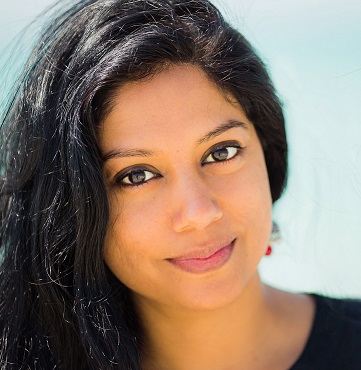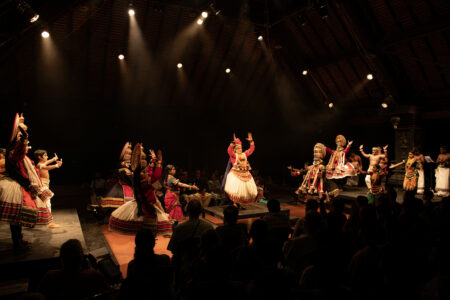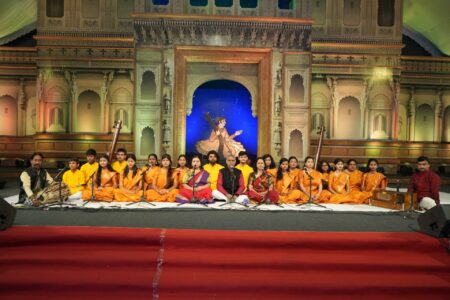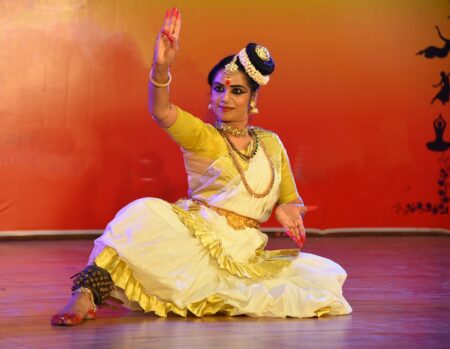
Dancing is a fundamental need through which we heal, connect, communicate and express our inner worlds. While everyone can naturally dance, it takes a lifetime of training and practice to qualify as a Dancer.
Why do we dance? A dancer might respond to this question with reasons ranging from physical to spiritual. But if we step outside of the performing arts space and look at dance merely as the act of moving our bodies rhythmically (usually to music), then evolutionary studies tell us that dancing is actually connected to survival skills. It was a way for our prehistoric ancestors to bond and communicate.
Dancer-philosopher Kimerer L LaMothe says humans dance because dance is human. “Dance is not an accidental or supplemental activity in which humans choose to engage or not. Dance is essential to our survival as human beings,” she explains in her book Why We Dance.
Neurologically speaking, our brains are hardwired to respond to rhythm and music with body movements. This explains our involuntary urge to nod our heads, tap our feet or sway our bodies when we listen to music.
It is not a learned skill; it is an innate ability. We began responding to music and rhythm through movement even before we were born. Babies as young as five months have the ability to bop to the beat, and continue to be intrepid movement explorers right through early childhood. Children don’t think about choreography or technique when listening to music. They spontaneously respond to tempo, rhythm and melody through movements authentic to them, rudimentary as it may be.
Conditioning and definition
We are all dancers by design. So, what happens to most people when they grow up? Why do people, other than those trained in dance, feel so awkward about dancing?
In my view, there are two main reasons. The first is social, cultural and environmental conditioning and the second relates to our strict definition of “dance” as a performative art-form.
Dancing requires us to put ourselves out there in full public view (unless of course you are just grooving to music in the privacy of your home). It leaves us vulnerable and open to judgment. When we move, we all want to look good and feel confident and don’t want to be judged and embarrass ourselves. This is one reason why we shy away from even attempting to dance.

Almost every culture has some form of folk or social dancing. If you grow up in an environment where folk and social dancing is active then you naturally pick up movements, dive in and participate. The urban environment is designed to make us stiff. It limits our natural expression. People live in their own bubbles with little real social interaction. The ‘conveniences’ offered by the urban environment makes us move less and less. And this over time makes us less and less comfortable in our own bodies. So, people start to believe that they cannot dance.
Why is dance a scary word?
Then there are cultures where dancing is abhorred. It is considered inappropriate and therefore people grow up with that deep-rooted conditioning and will never attempt to dance. And if they are ever put in a spot where they are asked to dance, they will be horrified and just freeze.
Of course, the dance I have been referring to thus far is that joyful, human ability to express, bond and interact through movement. The kind we almost exclusively engage in when no one is watching or judging.
Then there is that dance that we have come to commonly identify as Dance with a capital D – a complex act that involves a keen sense of rhythm, body control and co-ordination, flexibility, strength and spatial awareness. This is a learned skill that requires deep study of technique and incredible amounts of practice.
So, while everyone can naturally dance to music, it takes a lifetime of training and practice to qualify as a Dancer.
There is undoubtedly a distinction between dance and Dance as there should be. It only becomes problematic when we start to discredit any dance that falls outside of the elitist performing zone. One of the reasons why Dance has become a scary word for non-dancers and sometimes even dancers is that it has come to be associated solely with classically beautiful, visual feats of physical mastery and technical perfection. Whereas dance belongs to everybody and every body.
Finding your dance
A couple of years ago I attended a Creative Movement Therapy workshop by India based Educator and Movement Therapist Tripura Kashyap. Having trained as a dancer, I was quite comfortable to move to music. Many other participants initially felt a great deal of hesitation and admitted they’d never danced before.
Over the course of two days, participants were encouraged to explore rhythm, their range of motion and movement vocabulary in an environment that was safe and non-judgmental. We were given the freedom to improvise our movements and free style. But more importantly, we were asked to break free from any conditioning and learnt form to find a dance that was authentic to the bodies we inhabited.
This was a hugely liberating and levelling exercise. The non-dancers left feeling more confident and less threatened by the word “dance” while the dancers having switched off from performance mode and freed from ideas of right and wrong, connected more deeply with their movements.
For all of us, moving together unlocked things we didn’t know were locked away in our bodies. There was also a space for everyone and the dance they brought.
Dance is every body’s right and privilege. If you have a body, you can and should dance even if all you can do is move your eyes. Dance because it ticks the box on every single human need: physical, emotional, social and spiritual.
The world would be a happier place if we all, irrespective of our size, shape, background and abilities learned to connect more with our bodies and take delight in its movement. Dare I call it dance? Why not!
(The views are personal.)



